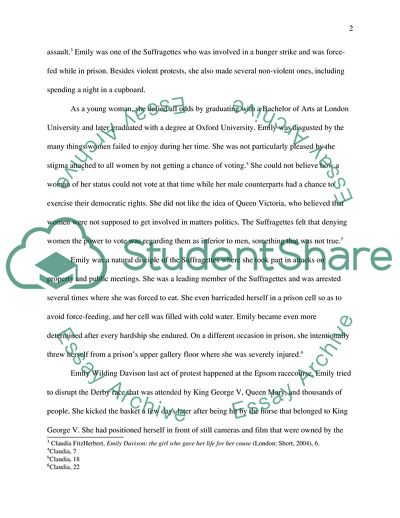Cite this document
(Emily Wilding Davison and the Suffragette Movement Essay Example | Topics and Well Written Essays - 1750 words, n.d.)
Emily Wilding Davison and the Suffragette Movement Essay Example | Topics and Well Written Essays - 1750 words. https://studentshare.org/history/1875080-family-legend-paper-emily-wilding-davison-and-the-suffragette-movement
Emily Wilding Davison and the Suffragette Movement Essay Example | Topics and Well Written Essays - 1750 words. https://studentshare.org/history/1875080-family-legend-paper-emily-wilding-davison-and-the-suffragette-movement
(Emily Wilding Davison and the Suffragette Movement Essay Example | Topics and Well Written Essays - 1750 Words)
Emily Wilding Davison and the Suffragette Movement Essay Example | Topics and Well Written Essays - 1750 Words. https://studentshare.org/history/1875080-family-legend-paper-emily-wilding-davison-and-the-suffragette-movement.
Emily Wilding Davison and the Suffragette Movement Essay Example | Topics and Well Written Essays - 1750 Words. https://studentshare.org/history/1875080-family-legend-paper-emily-wilding-davison-and-the-suffragette-movement.
“Emily Wilding Davison and the Suffragette Movement Essay Example | Topics and Well Written Essays - 1750 Words”. https://studentshare.org/history/1875080-family-legend-paper-emily-wilding-davison-and-the-suffragette-movement.


